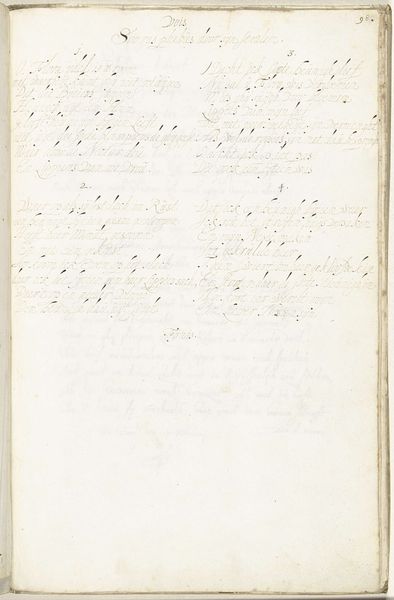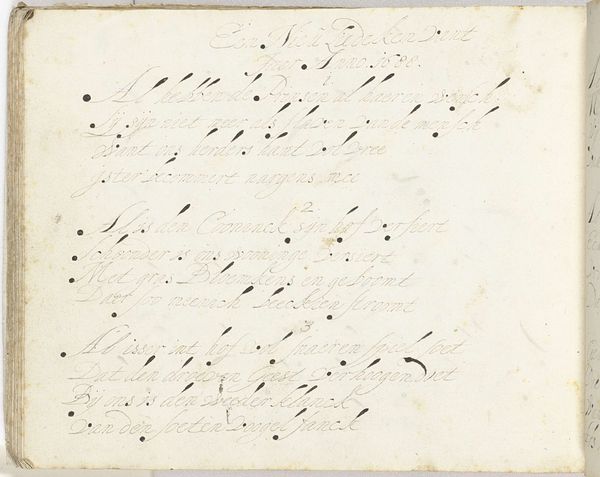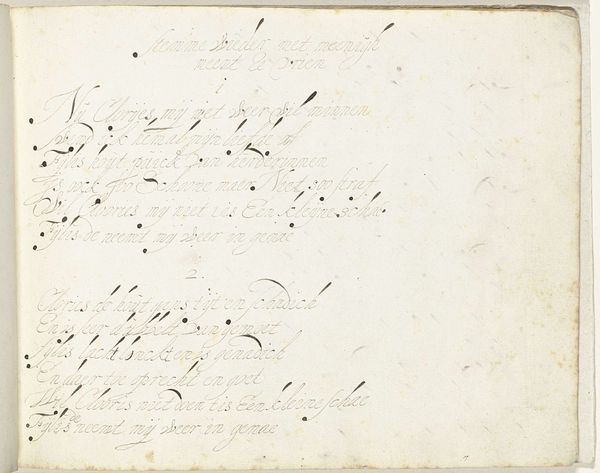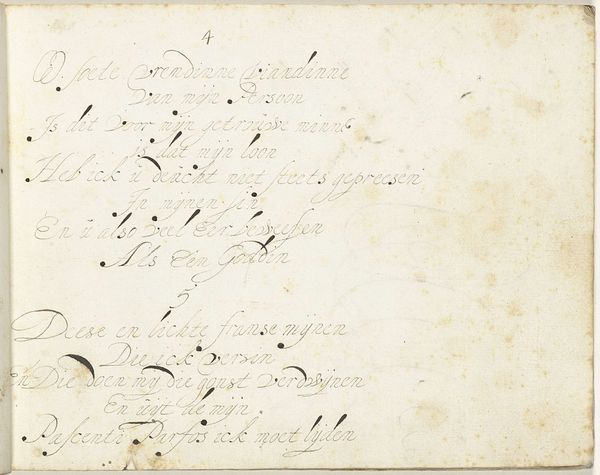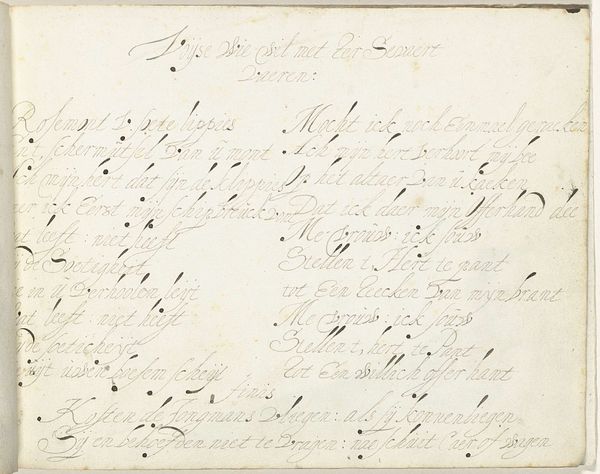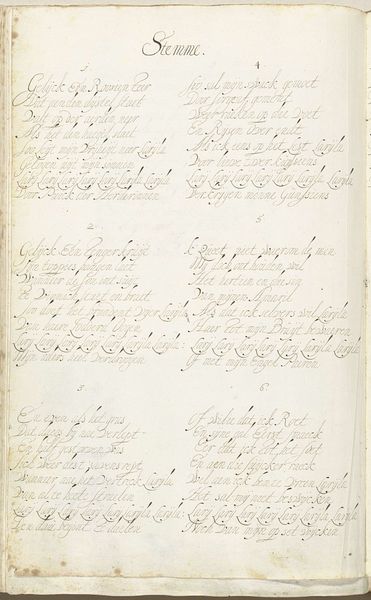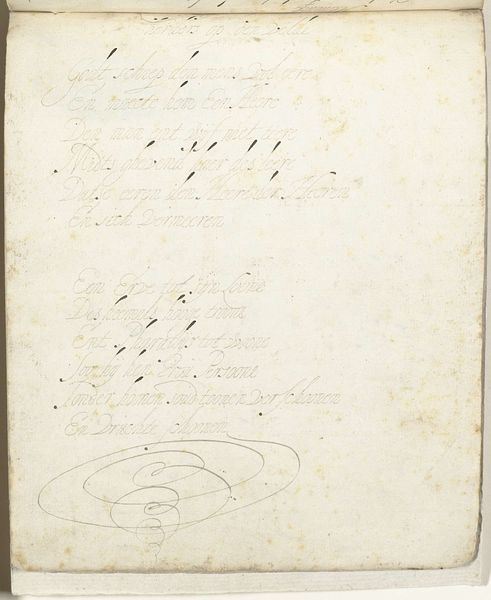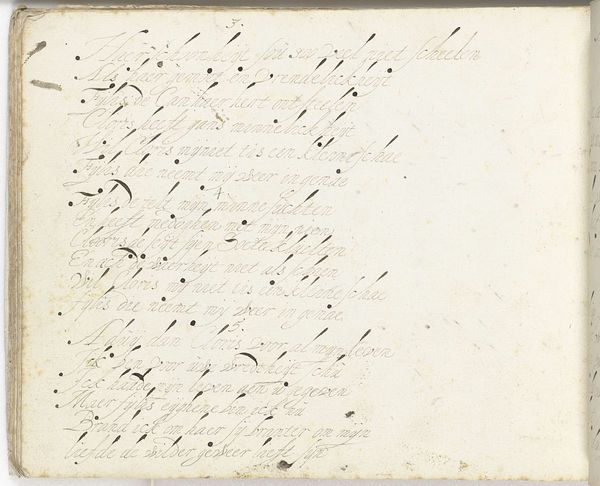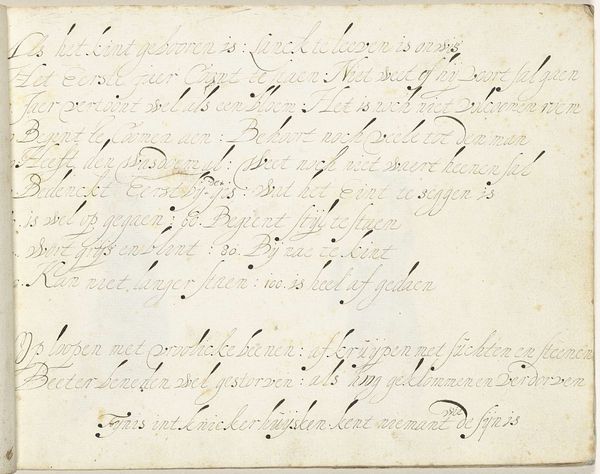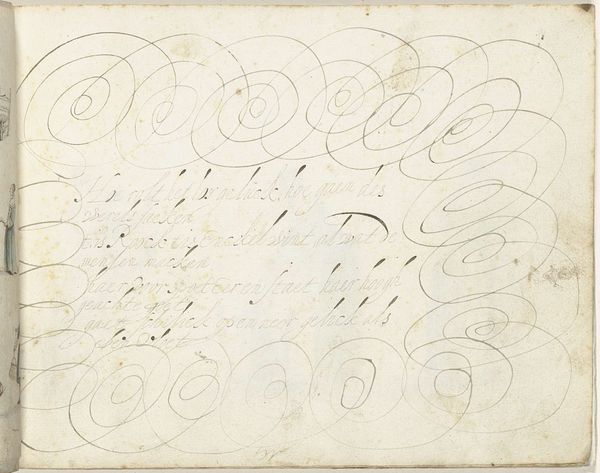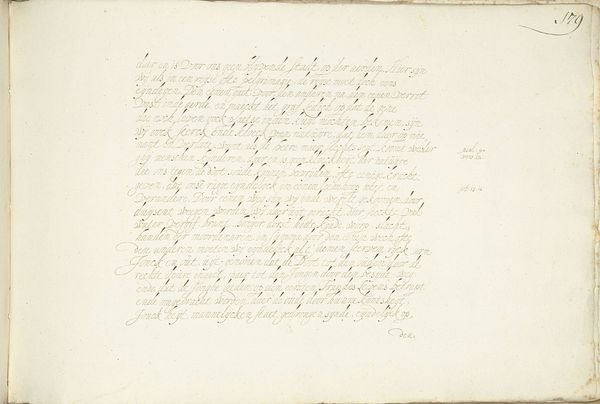
Gedicht over de boom van de kennis van goed en kwaad c. 1646 - 1650
0:00
0:00
drawing, paper, ink
#
drawing
#
water colours
#
narrative-art
#
dutch-golden-age
#
paper
#
ink
#
genre-painting
Dimensions: height 155 mm, width 211 mm
Copyright: Rijks Museum: Open Domain
Curator: Editor: We’re looking at "Poem on the Tree of Knowledge of Good and Evil" by Gesina ter Borch, made around 1646-1650, using ink and watercolor on paper. It seems so simple, just a handwritten page. What do you see in it? Curator: Well, for me, this piece isn't just about religious allegory. Consider the socio-political context of 17th-century Netherlands. Ter Borch, as a woman artist, would have been largely excluded from formal artistic training and the established art world. Doesn't the act of creating, of writing and illustrating, become a powerful statement of self-assertion and intellectual capability? Editor: That’s an interesting point. I was only considering it from a religious perspective, thinking about the story of Adam and Eve. Curator: Exactly. But what does the ‘forbidden fruit’ *represent*? Could it symbolize knowledge, autonomy, even rebellion against societal norms that confined women? Ter Borch's choice of subject, viewed through a feminist lens, can be interpreted as a commentary on women's restricted access to knowledge and power during that era. The delicate script, almost whispering from the page, subverts the very notion of women being silent. Editor: I never thought about it that way before. It makes me wonder if other female artists of the time used biblical scenes to comment on their own realities. Curator: Precisely! Think about Artemisia Gentileschi's "Judith Slaying Holofernes." While on the surface, it’s a biblical scene, it can also be read as a depiction of female empowerment and resistance against male aggression. Ter Borch’s drawing prompts us to consider whose stories are told, how they are told, and whose voices are silenced in the dominant narratives. Editor: That really shifts how I see this piece. It is not just about a biblical tale, it's about reclaiming a voice. Thank you! Curator: My pleasure! Always remember to consider the interplay between the artwork, the artist, and the broader social and political landscape.
Comments
No comments
Be the first to comment and join the conversation on the ultimate creative platform.
